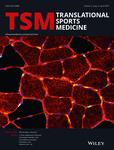Muscle elasticity under active conditions in humans: A methodological comparison
Abstract
Muscle stiffness under active conditions has been evaluated as a measure of muscle elasticity (expressed in N/mm) by the alpha method or B-mode ultrasonography in humans in vivo. While these are indirect methods, ultrasound shear wave elastography (SWE), which enables direct quantification of tissue shear modulus (a measure of elasticity, expressed in kPa), has recently been used to assess muscle elasticity. We compared muscle shear modulus under active conditions using SWE with active muscle stiffness assessed by the alpha method or B-mode ultrasonography. Seventeen healthy men participated in this study. Muscle shear modulus of the medial gastrocnemius (MG) was measured during submaximal isometric plantar flexion contractions (10%, 30%, 50%, 70%, and 90% maximal voluntary contraction). Active muscle stiffness of MG during short-range stretch after submaximal isometric contractions was calculated using the alpha method or based on changes in estimated muscle force and fascicle length. Muscle shear modulus was not correlated with either muscle stiffness determined by the alpha method or B-mode ultrasonography at any torque levels. These findings indicate the necessity to reconsider the previous findings on muscle elasticity under active conditions in humans, such as the effect of training background and the association with muscular injury risk.
CONFLICT OF INTEREST
The authors have no conflict of interest to declare. All authors approved the final version of the manuscript.




